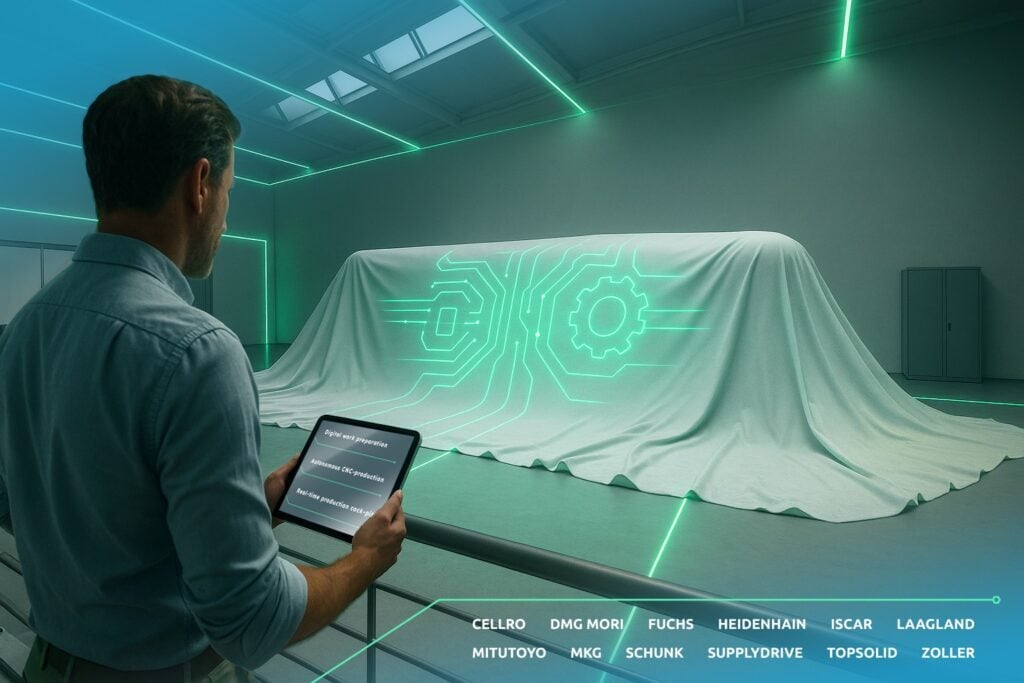ERP from the Cloud – No Need for Compromise
Published: March 24, 2023
Last update: August 20, 2025
Between customization and standardization
The cloud originates from a PR stunt performed by a US American software start-up more than 20 years ago. Their "No Software" campaign surprised the leading providers back then. They did not want to get rid of software but find a new way of making it available to customers. The provisioning of software was an all new concept more than 20 years ago. Today, the cloud is omnipresent.
The cloud has become mainstream and can be found all over the digital economy. Provisioning business software in the cloud has a lot of benefits: cost advantages, more flexibility and better scalability thanks to hyperscalers, to name just a few. As you can see, there are compelling economic reasons for operating ERP applications in the cloud. However, small and mid-sized enterprises are still hesitant to entrust IT partners with managing their core systems since this step needs thorough consideration, in both a strategic and technical sense.
The cloud as a means to an end
The cloud's main job is to provide software. That's why the cloud is not the cure-all solution for the challenges imposed by a competitive and global economy. A cloud label doesn't say anything about the smartness of software. Relevant are the core applications as well as the associated functions and services.
Can an ERP system meet the customers' complex requirements to gain a real business benefit? The priority should be on WHAT the customers are offered and not HOW. Once this has been sorted out, customers can turn to the question of how to provision the ERP system.
Mid-market manufacturing
Whether and how companies migrate their ERP system to the cloud depends on the respective degree of standardization. The processes in the automotive industry, for instance, are standardized to a large extent, so that companies in this sector will likely be the first to take their ERP systems to the cloud. However, especially small and mid-sized enterprises in Germany emphasze their individuality, which can give them a competitive edge but also make their path to the cloud somewhat difficult.
The hybrid strategy
The majority of mid-market manufacturing companies still prefer on-premises ERP software. Hybrid implementations are gaining ground, while full cloud solutions are still quite rare in production nowadays. One of the main reasons for this is that ERP systems are crucial to the business, which means they are not among the first systems to be transferred to the cloud. Mid-market companies are particularly reluctant where their complex manufacturing processes are concerned. After all, the applications have to meet the same requirements as the processes.
The expectations for the cloud differ from customer to customer, in both a technical and economical sense. The closer an application is to the core processes of a company, the more sensitive is the operation in the cloud. This reluctance is evident especially where modules like materials management, production control and logistics are concerned.
This also means that the further away an application is from the core processes, the easier it can be implemented as multi-tenant architecture. For example, e-procurement solutions are already mainly used in the cloud, while complex and highly customized applications are still operated on premises. Therefore, a hybrid strategy that combines the two worlds is the most reasonable solution at this point.
Individuality as obstacle for the cloud
The decision for or against the cloud is also based on a psychological component since mid-market manufacturing companies attach great value to their individuality, even with regard to their production processes. ERP providers are expected to adjust to the customers' existing process landscape, that is, to modify the standard installation. The cloud demands the opposite: without a harmonized process landscape based on templates and best practices for the particular industry, it's not possible to fully exploit the advantages offered by the cloud. It's time to change our mindset.
In order to be able to fully exploit the cloud potential, companies will have to change their expectations considerably and become willing to gradually complete their industry-specific key processes in the standard version. As industry templates can be used to further configure the ERP solution, the release capability for cloud solutions is significantly improved. System updates will become a thing of the past.
Rather an evolution than a revolution
ERP is often said to have been in use here and there without any changes for more than a decade. Needless to say, ERP providers put a lot of energy into the development of their software. The innovations featured in newer versions can only be used if mid-market manufacturing companies go along with this development. With regard to the release cycles and the related innovation steps that used to have almost biblical dimensions, the cloud has brought a lot of improvement.
Most importantly, we're talking about an evolution rather than a revolution here as an abrupt breach would be counterproductive. Providers will have to make sure to adapt to the different digitalization paces of their customers. In short, they have to assist their customers in successively adding new, fully integrated cloud services to their traditional core systems.
A company's future success requires an ever faster, iterative approach to the ideal operational status. Known lock-in effects that prevent fast response times and shorter investment and innovation cycles at maximum investment protection will soon cease to be tolerated by mid-market companies. Modern ERP systems like proALPHA will transition to open and fully cloud-native microservice architectures that may also be operated as hybrids and together with third-party applications.
The classic ERP monolith will thus be broken up and divided into standardized and encapsulated services. This way, customers can fully orchestrate their cloud and on-premises services according to their requirements. Thanks to this mix-and-match functionality, it's possible to thoroughly optimize processes and implement a "plug and play" system that unites Best of Suite with Best of Breed.


